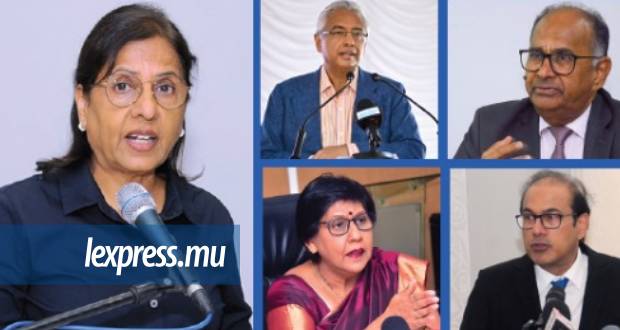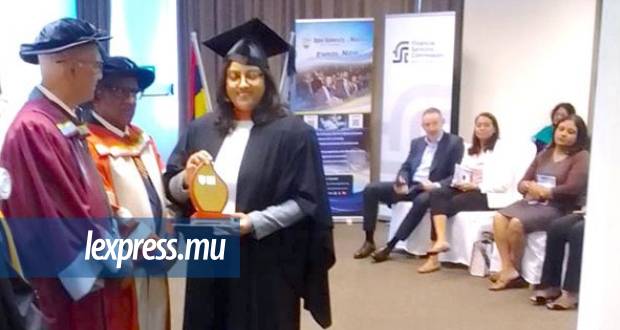Publicité
Elections: how a discredited narrative around “computer rooms” refuses to die
Par
Partager cet article
Elections: how a discredited narrative around “computer rooms” refuses to die

Shortly after the 2019 elections, a narrative around “computer rooms”, supposedly a new phenomenon, was created by the opposition parties as part of their election petitions. After failing in court, now this same narrative is being resurrected.
The return of the “computer rooms”
After the 2019 elections that were disputed by the parliamentary opposition parties in a series of election petitions, part of their case rested on the use of “computer rooms” during the counting process. When these petitions made their way to the Supreme Court, in a series of judgements this narrative was discredited. Despite this, however, the “computer room” argument is being resurrected as the opposition expects another general election to be nearing. This week, reportedly at a MMM politburo meeting, members of that party voiced their opposition to the use of “computer rooms” at the next general election, echoing similar statements earlier made by the Labour Party. The “computer room” argument was also brought up by an extraparliamentary party, the Linion Pep Morisien as its members Dev Sunnasy, José Moirt, Neena Ramdenee and Raouf Khodabaccus met with the Electoral Commissioner.
First time?
But how credible is this narrative anymore? Let us take a look at the first argument that was floated in almost all the election petitions – with the exception of the petition of Suren Dayal in no 8 which was about electoral bribery, not about the conduct of the 2019 elections themselves. This first point was that 2019 marked the first time that “computer rooms”, used to transmit real-time data to the general public as the votes were being counted, were used in a Mauritian election. One example of this was the Labour Party’s Lormus Bundhoo’s petition in no 13 – ultimately withdrawn by Bundhoo himself – which argued that, “this new procedure had never been used in any other previous elections held in Mauritius and no one had been apprised of that new procedure”. This was the argument that was maintained as late as 23 May 2022 when Labour Party’s leader Navin Ramgoolam (in his own petition for no 10 that also was withdrawn) submitted a plea at the Supreme Court that “maintains that the procedure of disseminating non-official provisional figures to the general public by inputting the results from the counting rooms on its website was a new procedure…”
But was it true that the software supplied by State Informatics Ltd (SIL) to provide real-time counting data online via the “computer rooms” was being used for the first time? As it turns out, not really. For the 2014 elections – when the Labour Party was the outgoing government – a similar system was being used, except that that time it was Mauritius Telecom that supplied the software. The same system was then used again during the municipal elections held in 2015. And SIL came into the picture not in the 2019 elections, but rather in the 2017 by-elections in Quatre-Bornes (that led to the victory of the Labour Party’s Arvin Boolell) when a similar system was feeding real-time data to the public and for providing data on nomination day for a prospective by-elections in no 7 that was due to be held in 2019, until a general election itself took place that year. So the first point that 2019 was the first time that “computer rooms” were used in an election, was simply not true.

What was going on in there?
The second point about the “computer room” narrative was that no one from the opposition knew what was happening there. If we turn once again to Bundhoo’s petition for no 13, “this room was out of bounds and the Petitioner and his agents did not have access to it. What happened in this room is unknown to everyone and is a cause of grave concern as no one has been able to check whether the figures which were collected from the counting room were effectively and correctly transmitted to the computer room”.
So, what was happening in these “computer rooms” during the 2019 elections? The process, put simply, was this; as every 100 ballots were counted, the results of these were recorded on two sets of forms, a “ballot paper counted” form being held by the head of each counting room and a “partial results form” by an election officer. The first set of forms were certified by counting agents of each party – in the case of no 10 these included the 44 counting agents of l’Alliance Nationale picked by candidate Jim Seetaram. The second set of forms – which contained identical figures – were handed over to Data Transmission Officers, nominated by the head of the civil service, but recommended and approved by the Electoral Commissioner’s Office and the Electoral Supervisory Commission respectively. It was these officers who submitted these partial results forms for the partial results to be input into the software that would periodically publish the results of the count online.
Another point was that the opposition candidates were not told about the “computer rooms”. This was elaborated at length during the election petition of Ezra Jhuboo for no 14 – which was ultimately defeated. Testifying in that case, Darmajai Mulloo, then-Chief Electoral Officer representing the Electoral Commissioner’s Office, argued that “there was no need to inform the candidates of the computer room inasmuch as it was not linked to the manual counting process”. Although the Supreme Court did not take kindly to this point, it did not see it as a big enough deal to be a problem; “it unnecessarily creates a situation whereby doubts as to the integrity of the counting process may arise. Had the petitioner (Jhuboo-ed.) been informed of the presence and purpose of the computer room in the course of the meeting of the respondent no 4 (electoral commissioner’s office -ed.) with the candidates prior to the holding of the General Elections 2019, there would probably have no raison d’être of the present petition”.
The confusion about counting
The crux of the “computer room” narrative was that they were somehow crucial in determining the election results in 2019. This conflation between counting the votes manually and the “computer rooms” that were being used to broadcast the results of this counting online was made in nearly every election petition submitted by the parliamentary opposition parties. In Ramgoolam’s petition for no 10: “When no one knows that the final results came from computation, serious doubts linger as to the veracity of the results announced. This occurred in all constituencies across the island.” This was also the theme of Adrien Duval’s petition for no 17 (which was ultimately defeated in the Supreme Court); “it was clear to the petitioner (Duval -ed.) there and then, that the counting in terms of recapitulation of votes was not being done in the office of the Returning Officer, as is customary, but was being done in the computer room”.

The answer to that in court was that it was irrelevant what was happening in the “computer rooms” – and in any case, none of the petitions succeeded in showing that the results bring published online via the “computer rooms” were any different from the results of the votes being manually counted under the gaze of party agents – since the election results were determined by the manual counting and not from anything happening in the “computer room”. In Duval’s petition, the Supreme Court on 27 April 2022 concluded that “there is no evidence of any link between the computer room and the physical manual counting of the votes. The alleged opacity surrounding the computer room is under the circumstances an unjustified apprehension of the petitioner”.
In the one petition that did succeed in securing a recount – that of Jenny Adebiro for no 19 in January 2022 –, it was not the arguments in her petition that clinched the argument, but rather the fact that during the course of the case, the possibility of void votes being counted emerged. “We cannot over-emphasise that, in reaching the conclusion that a recount of votes is warranted, we are not in any way making a finding as to the specific irregularities complained of in the election petition which remain disputed and unsubstantiated”, the court stated on 21 January 2022. A subsequent recount by the Master and Registrar of the Supreme Court, in any case, did not overturn the result nor did it lead to Ivan Collendavelloo losing his seat. In short, it had nothing to do with “computer rooms”.
Just how far the “computer room” argument failed in court was highlighted in the verdict in Jhuboo’s petition in August 2021, which the court had by that time argued “the whole of the petitioner (Jhuboo -ed.) revolves around the computer room”. Just as the case of Duval was to fail in court later, here too the “computer room” argument – confusing manual counting and arguing that it was the “computer rooms” that decided the election - led nowhere. The court concluded that in Jubhoo’s case, “the petitioner has failed to prove by way of cogent evidence on a balance of probabilities that there was any connection between the computer room and the physical manual counting process, the recapitulation exercise and the official final results announced by the respondent no 6 and that the alleged opacity surrounding the computer room had any impact on the veracity of the figures derived from the manual counting process. We hold on the basis of the evidence on record that the petitioner’s allegations of probable irregularity in the counting exercise and computation of votes have remained wholly unsubstantiated.”
Publicité
Les plus récents






